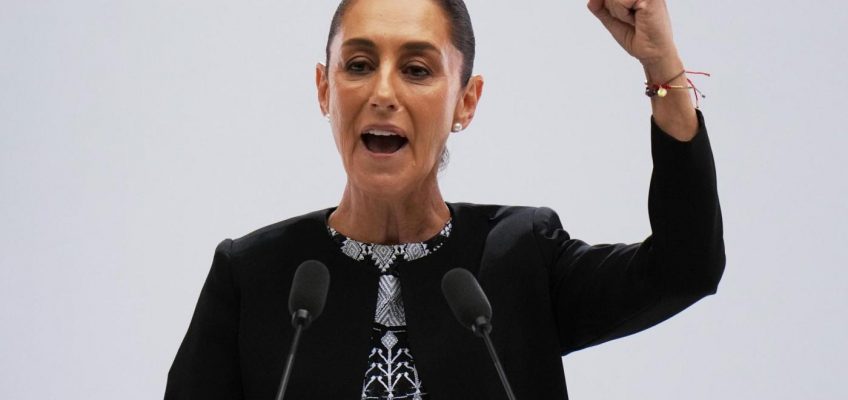By EVELYNE MUSAMBI and ISABELLA O’MALLEY, Associated Press
NAIROBI, Kenya (AP) — Iain Douglas-Hamilton, a British-born zoologist and conservationist who dedicated much of his life to protecting elephants, has died, his Save the Elephants group said Tuesday. He was 83.
Douglas-Hamilton was known for decades of conservation work, which included pioneering trackers and collaring to protect elephants against poaching and the illegal ivory trade. He died on Monday in Kenya, the statement said.
FILE – Dr. Iain Douglas-Hamilton fits a Global Positioning System (GPS) beacon on a tranquilized elephant in the Meru National Park, Kenya, May 21, 1998. (AP Photo/Jean-Marc Bouju)
Save the Elephants said he was “instrumental in exposing the ivory poaching crisis” and documenting the destruction of over half of Africa’s elephants in a single decade, “leading up to a crucial intergovernmental decision to ban the international trade in ivory in 1989.”
“Whether sitting quietly among elephants, poring over maps of their movements, or circling above a herd in his beloved aircraft, that glint in his eye was there,” the group’s CEO Frank Pope said.
“He never lost his lifelong curiosity about what was happening inside the minds of one of our planet’s most intriguing creatures,” Pope added.
Elephants use their ivory tusks — the elongated teeth on either side of an elephant’s mouth — for gathering food, digging and self-defense. But people have used ivory throughout history, including for weapons, jewelry, ornamentation and traditional medicinal purposes.
FILE – Dr. Iain Douglas-Hamilton climbs on top of a tranquilized elephant to put on a collar containing a Global Positioning System (GPS) beacon in the Meru National Park, Kenya, May 21,1998. (AP Photo/Jean-Marc Bouju, File)
The Uganda Conservation Foundation eulogized Douglas-Hamilton as someone who “generously shared his knowledge and expertise with the conservation community, inspiring action and collaboration.”
“We honor a life that didn’t just protect elephants, but empowered the people protecting them,” the foundation said.
Douglas-Hamilton’s research was considered by many to be essential in the push to ban the international trade of ivory. But despite being outlawed in 1989 by the Convention on International Trade in Endangered Species, ivory demand continued driving African elephants towards extinction, and Douglas-Hamilton’s advocacy played a role in shuttering domestic markets in an array of countries in the 2010s.
FILE – Dr. Iain Douglas-Hamilton checks on his laptop computer the position of an elephant fitted with a Global Positioning System (GPS) beacon in the Meru National Park, Kenya, May 21, 1998. (AP Photo/Jean-Marc Bouju, File)
During the 2010s, the Chinese government also took steps to halt ivory trade, including shutting down factories and retail outlets.
“With the end of the legal ivory trade in China, the survival chances for elephants have distinctly improved,” Douglas-Hamilton said in an interview with The Associated Press in 2017. “We must give credit to China for having done the right thing by closing the ivory trade.”
“There is still a long way to go to end the excessive killing of elephants for ivory, but there is now greater hope for the species,” Douglas-Hamilton said at the time.
Wildlife Conservation Network, which has Save the Elephants as a founding partner, said in a statement Tuesday that Douglas-Hamilton was a “giant in the field of conservation” and worked tirelessly to protect elephants.
“Iain was a pioneer and an icon. He was deeply respected, loved, and admired, and will be missed beyond words,” the network said.
Hamas calls for more international pressure on Israel before ceasefire’s next phase
Trump’s ceasefire plan for the Israel-Hamas war faces pitfalls as it moves into a new phase
Google facing a new antitrust probe in Europe over content it uses for AI
UN says world must jointly tackle issues of climate change, pollution, biodiversity and land loss
UN agency reports rise in violence against women journalists and activists linked to online abuse
Drought-related hunger can also be a cause of elephant fatalities. In 2009, Kenya experienced its worst drought in 12 years that created hazardous conditions and led to more than 100 elephant deaths.
“When (elephants) do not have enough food they also seem to be vulnerable to disease, their immune system weakens and they catch all sorts of diseases,” Douglas-Hamilton told the AP in 2009.
He was a close and longtime friend of famed primatologist Jane Goodall, who died in October at the age of 91.
Douglas-Hamilton is survived by his wife, Oria, their two daughters and six grandchildren.
O’Malley reported from Philadelphia.
The Associated Press’ climate and environmental coverage receives financial support from multiple private foundations. AP is solely responsible for all content. Find AP’s standards for working with philanthropies, a list of supporters and funded coverage areas at AP.org.




